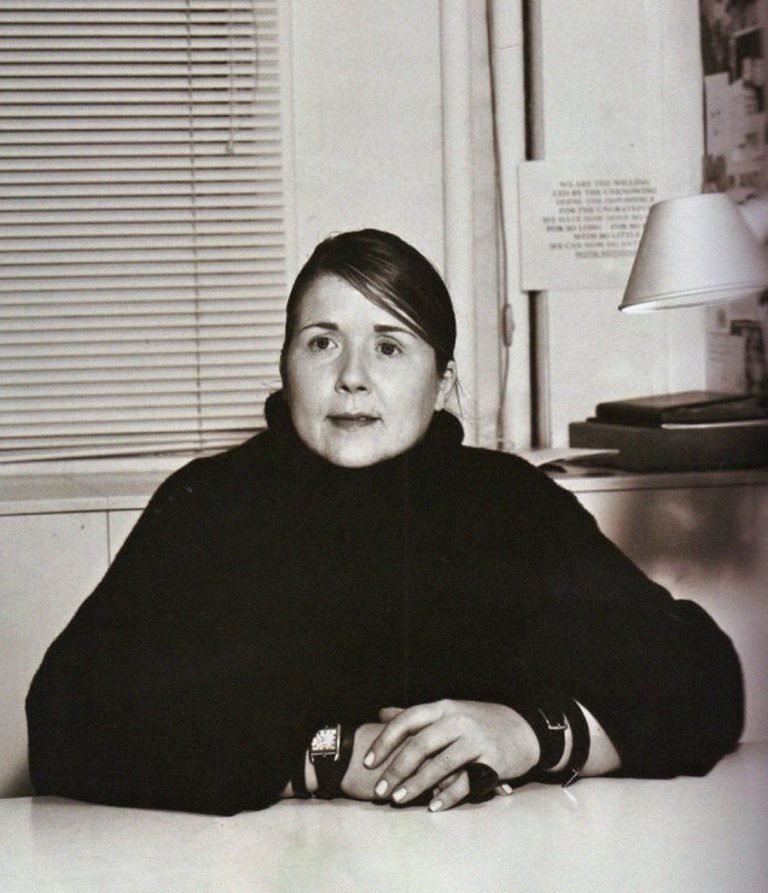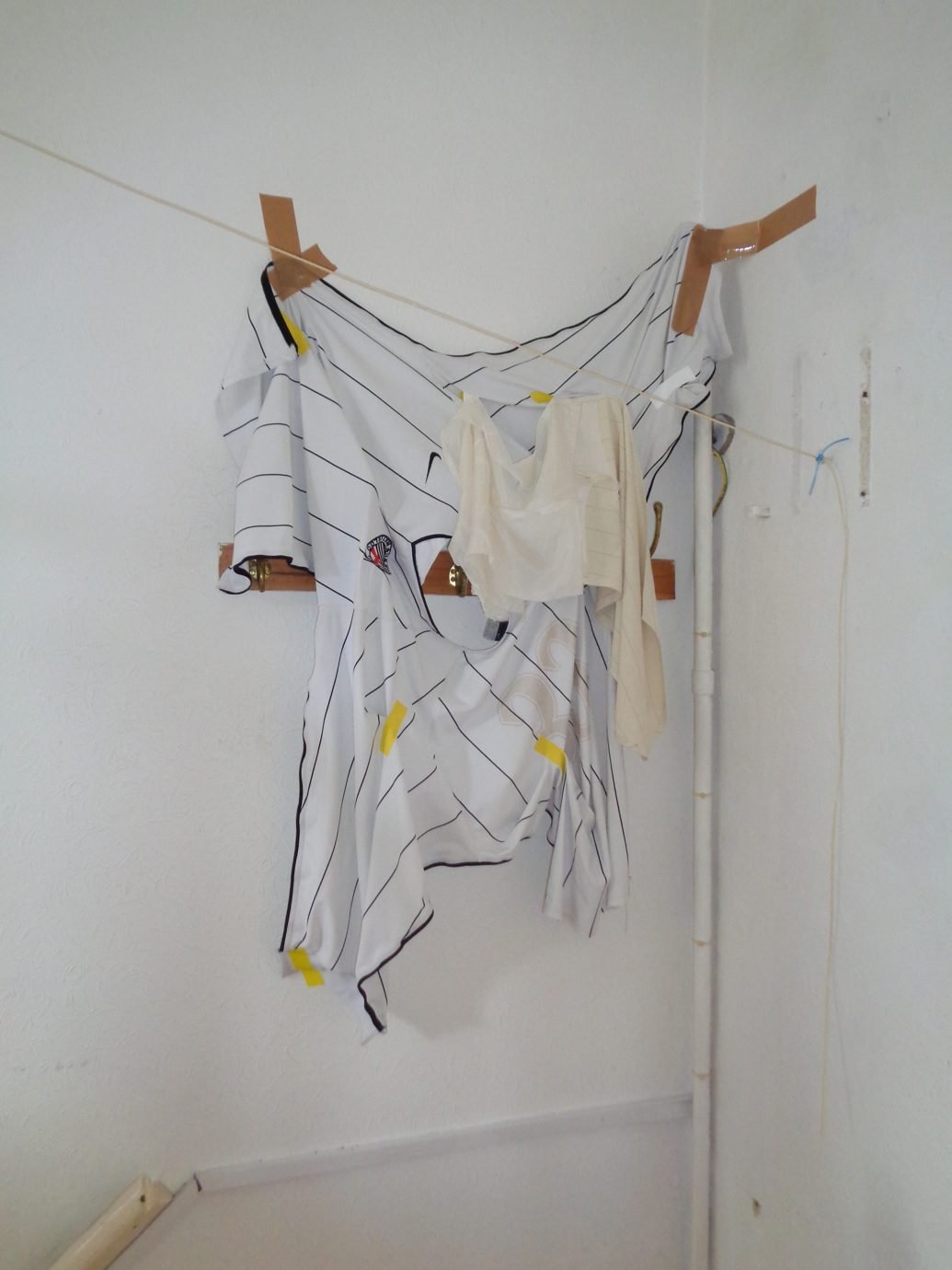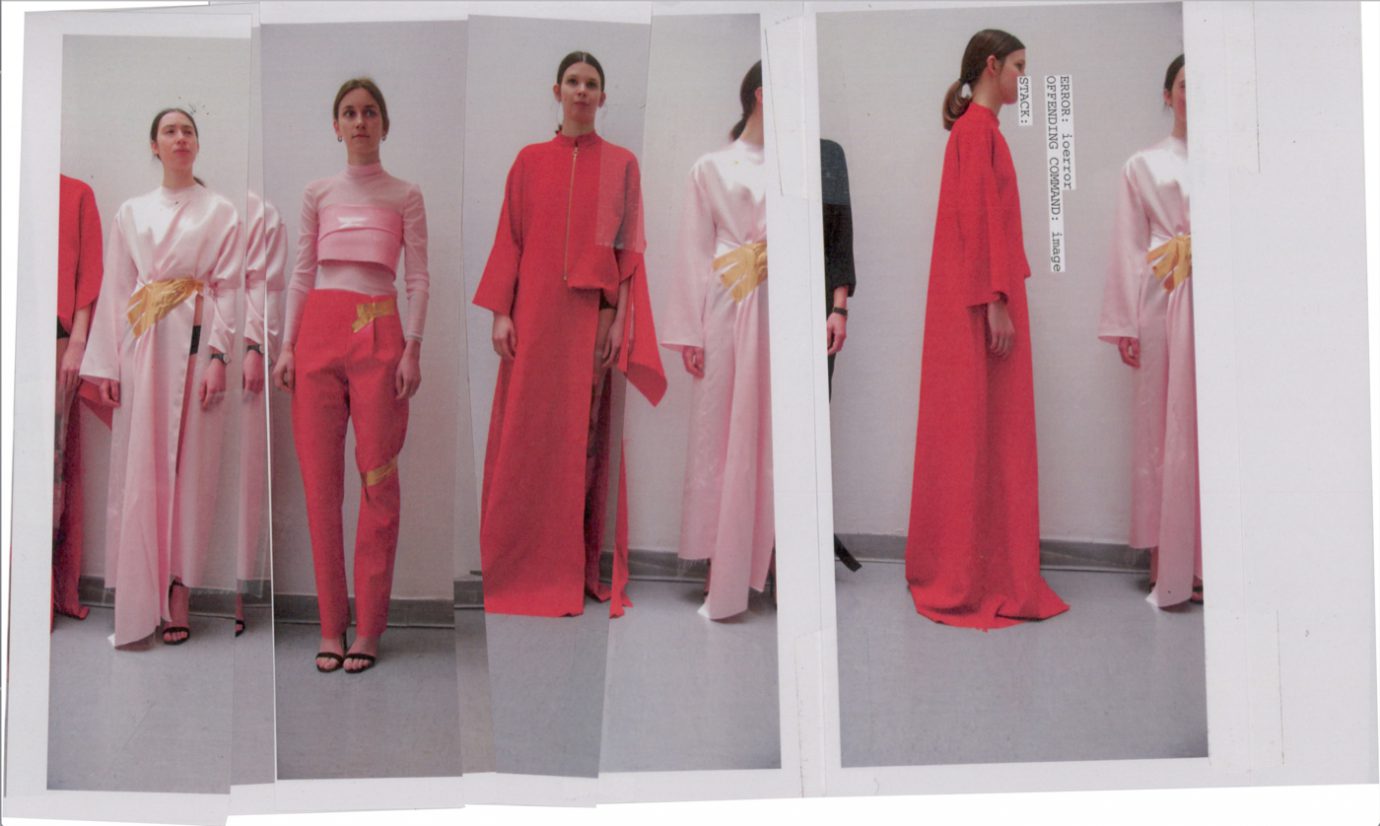Christina Seewald and her team collaborated with a makeup artist, videographer, DJ, stylist and set designer, via Zoom and FaceTime. This time, however, they will have no physical presence on set. Due to COVID-19 it is unlikely any physical shows will be taking place for some time, following the BFC’s announcement that sees LFWM going digital.
How to:
hold a fashion show in lockdown
We spoke to Christina Seewald, who after the cancellation of her physical show in Vienna, will be launching her FW20/21 collection via Instagram TV
The models, who were scouted via Instagram, received detailed dropbox files with unique styling, makeup and set instructions. Their looks were then mailed to them across Europe. The makeup look, a blushed 80’s style, was relaxed in order to be achievable from home. The models, following their supplied guidelines, created a series of videos wearing the FW20/21 collection which symbolises female domination. Knitted bras, scrunchies, panties, sheer cardigans and culottes, the collection is well suited to elevate loungewear aesthetics. Once the videos were received a videographer edited the clips together and added in the music. It will be ready for us to watch via Christina Seewald’s Instagram on the 1st of May, 2020.
But in the meantime, what are the pros and cons of such a process? How will this format of communication affect buyers’ consumption patterns? And how will the line between on schedule and off schedule will become further blurred? Speaking with Christina gave us some insight.
“When buyers touch the different materials and take a closer look at all the details on my knitwear pieces, it’s definitely what makes them order my garments.”
You describe the collection as ‘seasonless,’ do you think post-pandemic we will see more people rejecting the traditional fashion calendar?
I hope this will happen. It will give designers the opportunity to showcase in a more independent way, and make it more exclusive and tailored to their branding needs. The traditional fashion calendar pressures designers to deliver constantly. It’s something that limits our creativity.
One of the obvious drawbacks is that buyers won’t be able to physically touch the clothes and understand their technique/form – is this something that concerns you?
It’s really appealing to myself, customers and buyers, to have good quality materials and finishes. When buyers touch the different materials and take a closer look at all the details on my knitwear pieces, it’s definitely what makes them order my garments. This will clearly affect my sales, and surely many other designers will face the same problem. I am a very tactile person and a lot of people in this industry are too, but it will push us to deliver very good images and think of new ways on how to show such important details.
Do you think, with all shows going digital in the coming seasons, the line between schedule/off schedule will become further blurred?
Yes, it will become even more blurred, and it will allow brands with smaller budgets to stand out.
It’s very interesting that you were working with a makeup artist, videographer, set designer, and stylist, who were not physically on the sets – what were the pros and cons of this?
Pros:
It made us push and rethink the whole process of a fashion show.
We collaborated with people all around Europe!
It was more sustainable, as we had to face a lot of limitations and think of new ways to tackle them.
Cons:
It’s less fun! There is no direct interaction with people, I miss that. Talking to models and stylists, exchanging experiences. People inspire you on set and on location.
When social distancing orders are eventually lifted, would you consider holding a show digitally again?
Yes, I think I still want to continue using the virtual show format, but I would also like to go back to a more traditional approach. I think a balance of both is the key. The atmosphere that is created in a room can’t be ´performed´ in a digital way.
I think my knitwear is more impactful when seen in real life. Hanging, moving, presented in real-time on a body.
Creatively did you feel the lockdown has been more stimulating or limiting?
Both, as I have had more time to question certain things and overthink my working processes. I am a big team-worker and enjoy the company of others in my studio. The positive energy we create while we are working together, in the same space.
“Hopefully, people will consume less and invest in quality pieces, questioning their origin and comfort.”
People’s working from home style can be very interesting, as they are dressing for themselves more than ever. Your collections prior to now have fit into an elevated loungewear aesthetic; Do you think when the lockdown is lifted the way people dress and consume will be different from pre-pandemic? How so?
Yes, of course, it will have an impact. People might value the importance of clothes and getting dressed more. There will be a celebration of getting dressed and appreciating your outdoor wardrobe while combining it with some cosy lounge-wear. Hopefully, people will consume less and invest in quality pieces, questioning their origin and comfort.
Did self-isolating alter your research process in any way?
Yes, I used to go to libraries, vintage archives, second-hand stores, and markets. Now I recall my personal archive that I’ve built using what I have at home in my wardrobe, books, sample boxes, portfolios, and, obviously, the internet to deepen my research.
“In order for independent brands to survive, we still need buyers’ support.”
How has the pandemic affected your relationship with retailers?
It’s frustrating, a week before lockdown I had a lot of buyers and things were on great terms, but from one night to the next, everything drastically changed. Buyers tend to drop young brands, I suppose even more now – and that’s definitely not ok.
I hope after the virtual show is available to watch and less rough lockdown measures are applied, retailers will jump back on board and support small brands. Obviously, the payment conditions might be different for the following years, everyone’s budgets will be affected. But in order for independent brands to survive, we still need buyers’ support.
























